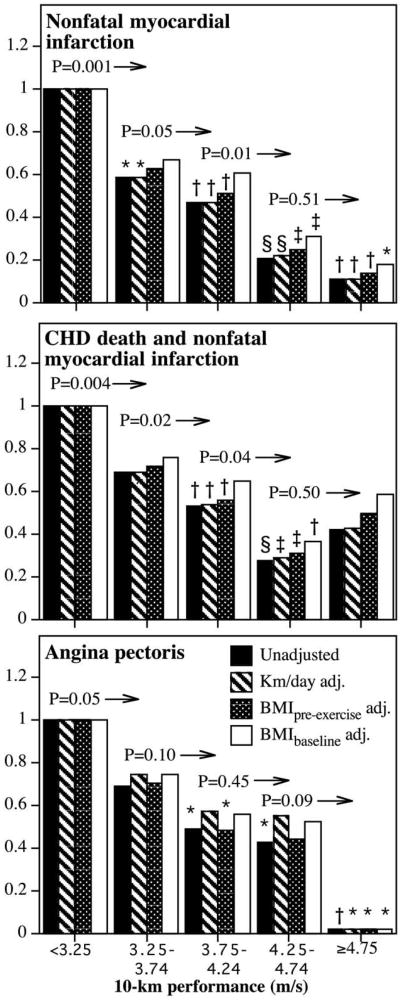Figure 1.
Hazard ratio from survival analyses of men's reported physician-diagnosed myocardial infarction (top), nonfatal infarction plus CHD death (International Classification of Disease, Ninth Revision, codes 410 to 414 and 429.2; International Classification of Disease, 10th Revision, codes I20 to I25) (middle), and angina pectoris (bottom) by cardiorespiratory fitness (10-km footrace performance). Hazard ratios were adjusted for age, education, intakes of meat, fish, fruit and alcohol, aspirin use, and pack-years of cigarette use. Significance levels provided (above bars and to left of arrows) are relative to all greater fitness levels (e.g., men who exceed 4.24 m/s had significantly lower risk of CHD death and nonfatal myocardial infarction than men who ran 3.75 to 4.24 m/s at p = 0.04, middle panel). Significant differences relative to the least fit (slowest) runners are coded (*p <0.05; †p <0.01; ‡p <0.001; §p <0.0001). Sample sizes are provided in Table 1. Fitness categories were defined a priori to be of constant width and symmetrically distributed (Table 1) while providing adequate sample sizes within each category.

